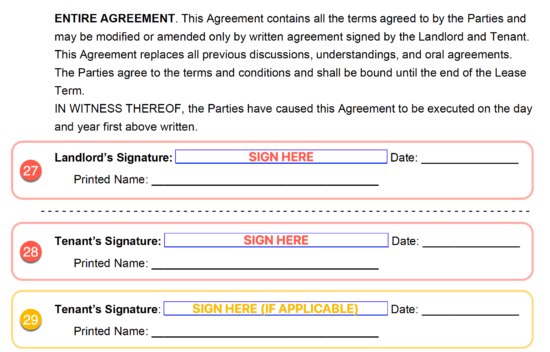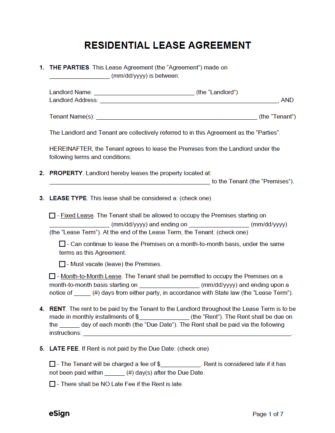
A lease agreement is a legally binding document that allows a tenant to occupy property and pay rent to a landlord. It is commonly written after both parties agree to the terms and conditions of a tenancy arrangement. After a lease is signed, the tenant can move in on the start date.
A lease agreement is a legally binding document that allows a tenant to occupy property and pay rent to a landlord. It is commonly written after both parties agree to the terms and conditions of a tenancy arrangement. After a lease is signed, the tenant can move in on the start date.
PDF Download
A lease agreement is a legally binding document that allows a tenant to occupy property and pay rent to a landlord. It is commonly written after both parties agree to the terms and conditions of a tenancy arrangement. After a lease is signed, the tenant can move in on the start date.
4.6 | 248 Ratings Downloads: 45,717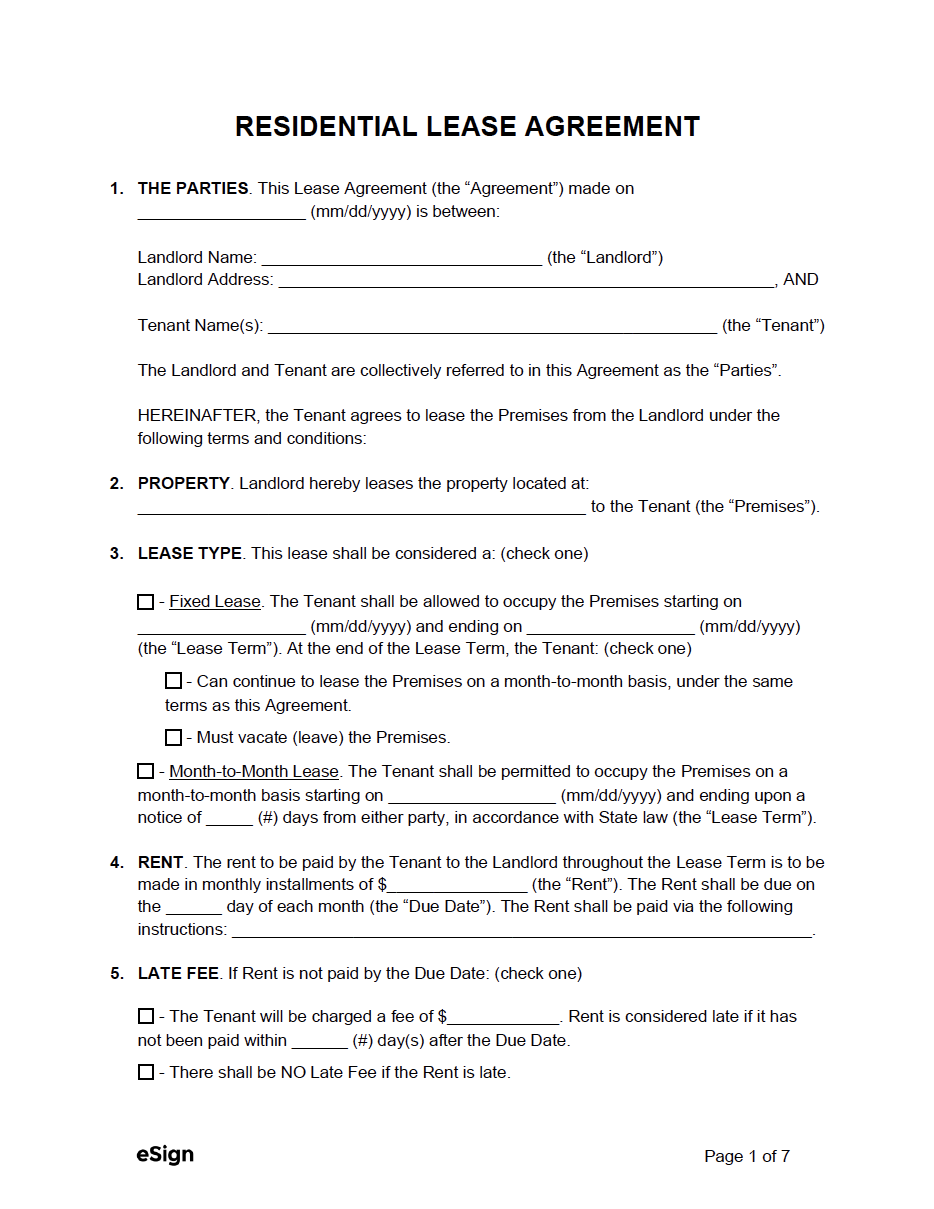
Housing Facts (2023)

As a landlord, taking great photos is the most important part of a listing. 19% of tenants in 2023 admitted to signing a lease without viewing the property in-person. [5]
Top Rental Websites (5)
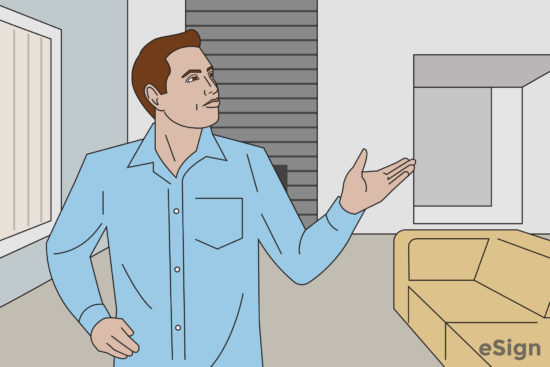
When scheduling a showing, it’s recommended to do so when the tenant isn’t home and to make sure is clean.
Rental Application – If the tenant shows interest, obtain their ideal move-in date and their personal and employment information.

It is recommended to run a consumer report on an applicant that includes their credit report, verifying employment, and a general search of public records. It is common to charge an applicant a non-refundable fee to generate this report.
Screen a Tenant (top 5 websites)
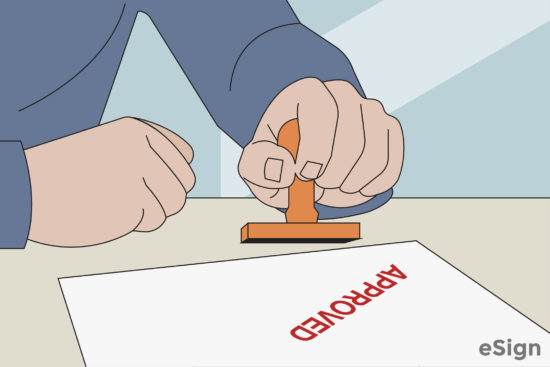
After reviewing the tenant’s credit report, criminal history, and verifying references, it’s time to make a decision.
If approved, the tenant will go on to negotiate and sign a lease agreement in the next steps.If rejected, the landlord will be required to send the applicant an Adverse Action (Rejection) Letter mentioning the reasons for refusal and where they can get a copy of the consumer reports generated.

When negotiating a lease, it is a reminder that affordability is the most common negotiating point of a lease for 83% of renters. [6]
Tenants with “Fair” Credit
If the landlord would like additional security, they can request the tenant do the following:

Signing a lease ensures that both parties are legally bound to the tenancy. In 2023, 40% of leases were signed electronically, and 52% were signed in person. [7]
Legally Binding
Electronic signatures are considered legally binding under U.S. law. [8]
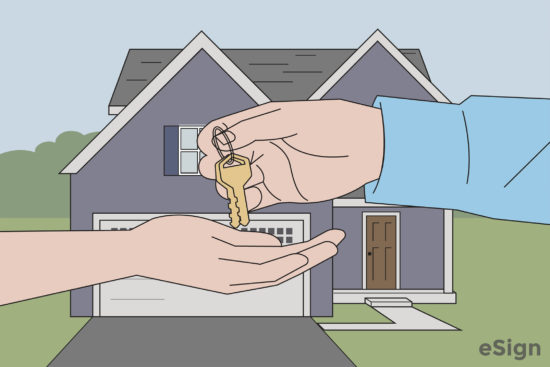
After the lease is signed and the security deposit and first month’s rent have cleared, the tenant can move-in on the 1st day of lease term.
Move-In Checklist – Recommended to be used to record the condition of the property at the start and end of the lease.

60% of tenants pay their rent online, and 69% of those who don’t pay online would prefer an online option. [9]
Accepting Rent Online (5 websites with no monthly fee )

At the end of the lease, the landlord must decide whether to lease the property to the tenant again.
2 Options
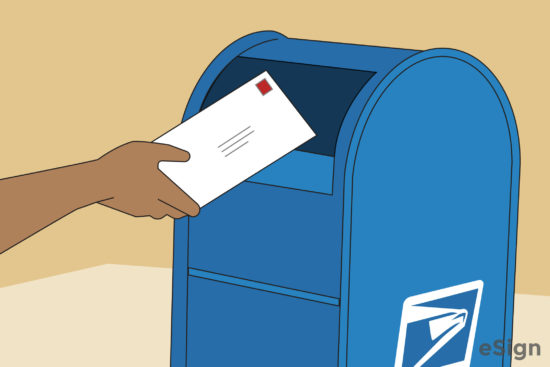
The landlord is required to return the security deposit. A landlord will commonly inspect the property and deduct any repairs from the amount.
Security Deposit Return Letter – If the landlord deducts any amount from the security deposit, an itemized list of the damages must be provided to the tenant.
Note about colors:
This section is used for identifying the landlord (the person that manages or owns the rental) and the tenant(s). The landlord will need to type the following information in this section:
1) – Date. The date the lease is being completed (the current date).
2) – Landlord name. The full name of the landlord. This is the person that owns or manages the property.
3) – Landlord’s address. Includes the street, city, state, and ZIP code.
4) – Tenant name(s). The name(s) of the tenant(s) that will be renting the property.
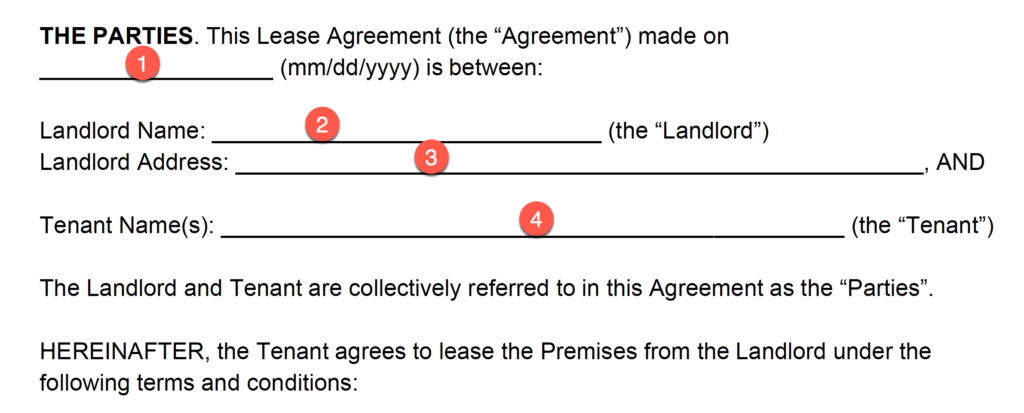
5) – Property address. The full address of the rental property. This should include the street, unit # (if any), city/town, state, and ZIP code.
Example: 123 Rental Ave, Suite 9A, ABC City, Texas 78701.
This area is for specifying the length of the lease. The landlord can choose one of two (2) options. The first (and more common) option is “Fixed Lease,” which refers to the agreement being established for a pre-determined length of time (such as 1 year). The second option is a “Month-to-Month Lease,” which is a type of periodic contract that has no end date and renews automatically on a monthly basis until either party wishes to terminate it.
6) – Lease type. Check one (1) of the two options shown. If “ Fixed Lease ” is selected, complete the fields marked with yellow. Enter the start and end dates, and select whether the lease will continue as a “month-to-month” agreement after the term ends OR if the tenant(s) will be required to move out.
If “ Month-to-Month Lease ” is selected, enter the starting date of the lease followed by the number (#) of days either party has to give in order to terminate the contract.
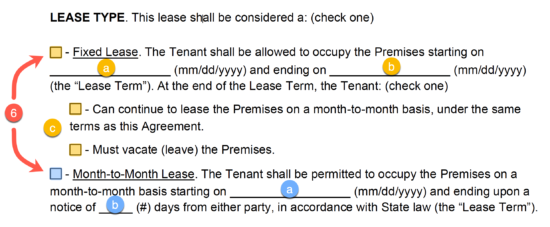
This provision allows the landlord to set the monthly rent ($) the tenant(s) will be required to pay.
7) – Rent amount. Type the total amount ($) of rent the landlord will collect from the tenant(s).
8) – Rent due day. Enter the day of the month the rent will be due. This is typically the first (1st) of every month.
9) – Payment instructions. Describe how the tenant should go about paying rent (e.g., “Mail via check to [Address]” or “send via PayPal.”)
A late fee is a monetary penalty that is billed to the tenant(s) if they are late on rent.
10) – Late fee (Y/N). Select whether or not the tenant(s) will be charged a fee if they are late on rent. If the first option is selected, complete steps 10a and 10b by typing the amount ($) of the late fee, followed by the number (#) of days that must pass after the rent due date before a late fee can be issued.
A proration period is any time the tenant will be living in the rental that doesn’t fall within one (1) full rent payment period. For example, if the tenant wanted to move into the property a couple of weeks before the official start of the lease, the landlord could require them to pay two (2) weeks’ worth of rent (known as “prorated rent”).
11) – Proration period (Y/N). Place a checkmark in one (1) of the two boxes shown to indicate the proration period. If the first box was selected, enter a) the starting date of the proration period, followed by b) the amount ($) the tenant will be paying.
Note: Many states consider rent that is received upfront to be a security deposit. Because many states restrict security deposits to one (1) or two (2) months of rent, the landlord could be breaking rental laws by accepting pre-paid rent on top of a security deposit.
Enter the dollar ($) amount of the security deposit that the tenant(s) is/are required to pay at the start of the lease. Enter the full value of the deposit, not the amount each tenant would be required to pay. Specify the number of days the landlord has to return the deposit (less any deductions) at the end of the lease.
12) – Security deposit (Y/N). Check the appropriate box to indicate whether or not the tenant(s) will be required to pay a security deposit. If the first (top) box is checked, enter a) the amount ($) of the security deposit that will be collected, followed by b) the number (#) of days the landlord will have to return the deposit once the lease term expires.
A “returned check” occurs if a tenant’s check bounces due to insufficient funds in their bank account. To prevent this from occurring, the landlord can charge a fee.
13) – Returned check fee (Y/N). If the landlord will require a fee ($) for bounced checks, place a checkmark in the first box and enter the amount ($) of the fee. If a fee will not be required for bounced checks, select the second (2nd) box and proceed to the next step.
14) – Occupants (Y/N). If the tenant(s) will have additional person(s) living in the rental, check the first (1st) box and type the name(s) of the other occupants in the provided field. If the tenant will not be living with other occupants, check the second (2nd) box.
15) – Move-in inspection (Y/N). If the landlord and tenant(s) will be completing a move-in checklist together, select the first (1st) box. Otherwise, check the second (2nd) box.
Note: Conducting a move-in inspection is highly recommended to avoid charging the tenant(s) for the damage they didn’t cause.
16) – Furnishings (Y/N). If the rental is furnished, check the first (1st) box and list the furnishings that will be included (e.g., “living room couch, TV set, dining table). If it is not furnished, check the second (2nd) box and head to Step 17.
17) – Utilities. List any utilities that the landlord will be responsible for (if any). Any fees not included will be the tenant’s responsibility.
18) – Parking provided (Y/N). If the tenant(s) will be provided one (1) or more parking space(s), check the first (1st) box. Then, a) type the number (#) of spots provided, b) check the box corresponding to whether or not a fee is required, c) type the amount ($) of the fee (if any), followed by d) selecting the option that corresponds to how often the fee will need to be paid. If the tenant(s) will not be given parking, the last box (blue) should be checked.
Due to pets being a potential liability for landlords, many choose to restrict (or deny) the number and types of pets tenants can have.
19) – Pets allowed (Y/N). If pets will be allowed on the premises, check the first (1st) box. Then, the landlord will need to a) type the number (#) of pets that the tenant(s) can have, b) list the type(s) of pets that are permitted, followed by c) the deposit the tenant(s) will need to provide to cover any damage caused by their pet. If pets are not allowed on the premises, the second (2nd) box should be checked.
20) – Smoking (Y/N). If smoking is permitted in certain areas on the premises, check the first (1st) box and specify exactly where tenants can smoke. If smoking is not allowed, check the second (2nd) box.
In the event the owner of the property sells the rental, the landlord can specify whether the new owner would have the power to terminate the rental agreement.
21) – Right to terminate lease (Y/N). Check the first (1st) box if the new owner would have the right to terminate the rental agreement. Then, enter the number (#) of days’ notice the new owner would need to provide the tenant. Check the second (2nd) box if the new owner would not have the right to terminate the lease agreement.
22) – Landlord notice address. Type the full address the tenant(s) can use to send the landlord notices and other important information.
23) – Tenant notice address. Type the address that should be used for sending the tenant notices (most likely the same address as the rental property).
24) – State name. Enter the name of the state the rental property is located in.
25) – Property built before 1978 (Y/N). If the property was built prior to 1978, check the first (1st) box. The landlord will need to complete (and attach) a Lead-Based Paint Disclosure Form. If the property was built after 1978, check the second (2nd) box and proceed to the next step.
26) – Additional provisions. If there are any additional sections the landlord wishes to include in the agreement, they can be written in the text box provided. Alternatively, the landlord can attach an addendum if more room is required.
At a minimum, the landlord and one (1) tenant need to sign the lease.
27) – Landlord name, signature, & date. The landlord will need to sign their name (with eSign or by hand), enter the date (mm/dd/yyyy), and write their full name beneath their signature.
28) – Tenant name, signature, & date. At a minimum, at least one (1) tenant will need to sign, date, and print their name on the contract.
29) – Second (2nd) tenant name, signature, & date. If a second tenant will be on the lease, they will need to sign, date, and print their name on the form.
